Have you ever wondered what happens behind the scenes at LeShuttle? You might have questions like: “who drives the passenger shuttles?”, “How do cars get onto them?”, or “How do they control trains across two separate countries?”
Well, rest easy. We’re about to share some insider information so that next time you’re enjoying a relaxing journey from Folkestone to Calais with us, you’ll know all about how we make it happen. You’re also about to meet a very special member of our team.
Introducing Dennis Watts
Meet Dennis Watts, a shuttle driver for LeShuttle's UK traincrew department. He’s been at LeShuttle since 2012, starting out as a crew member on board the shuttles, before qualifying as a Driver/Chef de Train (Train Captain) in 2013. Dennis drives both LeShuttle's passenger and truck shuttles and is also a Chef de Train (Train Captain) and crew member when required.
“It's a very responsible role and requires us to not only drive the shuttles but also to manage the crew and liaise with the control centres and rolling stock technicians on both sides of the Channel. We’re responsible for dealing with technical faults and emergencies on board. If a shuttle were to break down in the tunnel, we are the first responder to try and repair the fault and get the shuttle moving again. Should the evacuation of a shuttle be required, we're there to make sure that the evacuation is carried out quickly and safely.”
Dennis has been a keen amateur photographer since school (before digital cameras were realistically available). When LeShuttle opened, he was on work experience at his local newspaper, The Folkestone Herald, and remembers the opening of the Channel Tunnel as an important event for the area.
“I studied photography at A-Level and now I'm a Licentiate member of the Royal Photographic Society. A few years ago, I was asked if I could take some photographs for LeShuttle, and I was happy to take advantage of the privileged access to our operations that my main role affords me. When I'm a reserve driver and not needed for driving duties I'll often use my time on site to take photographs which you will often see on social media as well as the company website.”
Dennis’ photography skills are certainly impressive, and they’ll help to show you more about LeShuttle.
The tunnels
One of the largest engineering projects undertaken in the UK, The Channel Tunnel was first designed in 1802, but for horse-drawn carts! It wasn’t until 1987 that work truly began and it was officially opened by Queen Elizabeth II and French President Francois Mitterrand on 6th May 1994. You can see a full timeline of The Tunnel here.
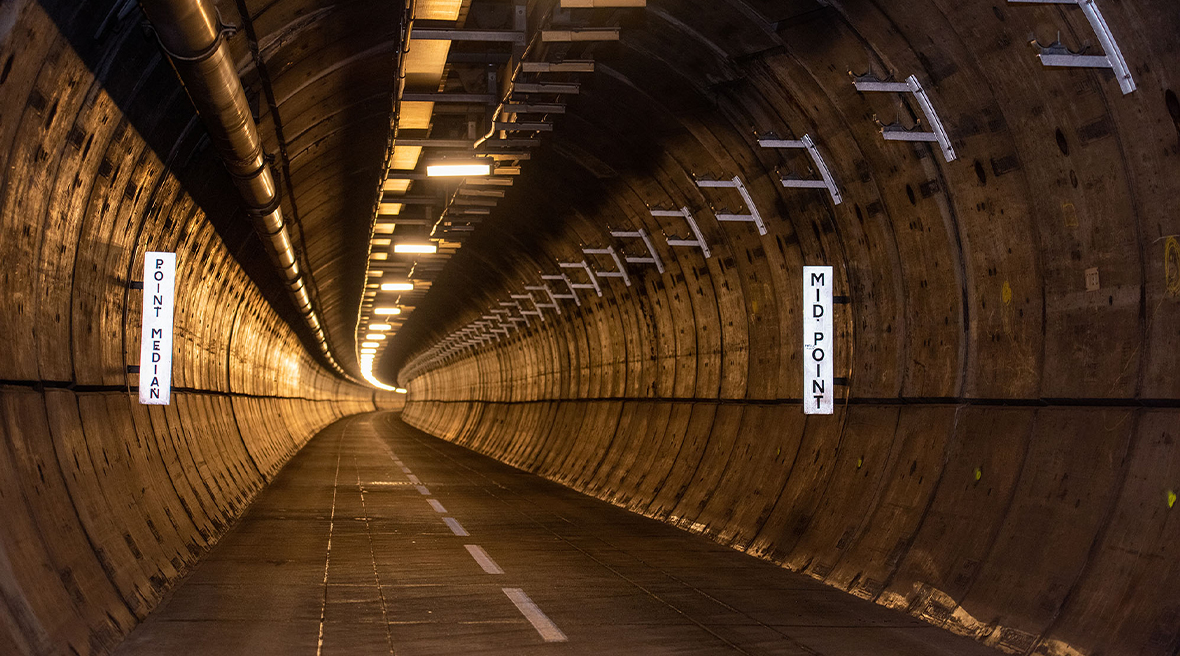
This is a service tunnel used for routine maintenance for LeShuttle
As you can see from Dennis’ picture above, the tunnel isn't straight, it weaves about a little in order to follow the geology. Prior to 1990 (when the tunnel first broke through), there hadn't been a land border between the UK and France since the ice age. The layers of Chalk Marl, which is ideal for tunnelling, were bored through with relative ease to create the tunnels.
Dennis explains: “The tunnel in the picture is a service tunnel used for maintenance access. It provides a ventilation conduit for the rail tunnels and it's also our lifeboat should we need to evacuate a shuttle.”
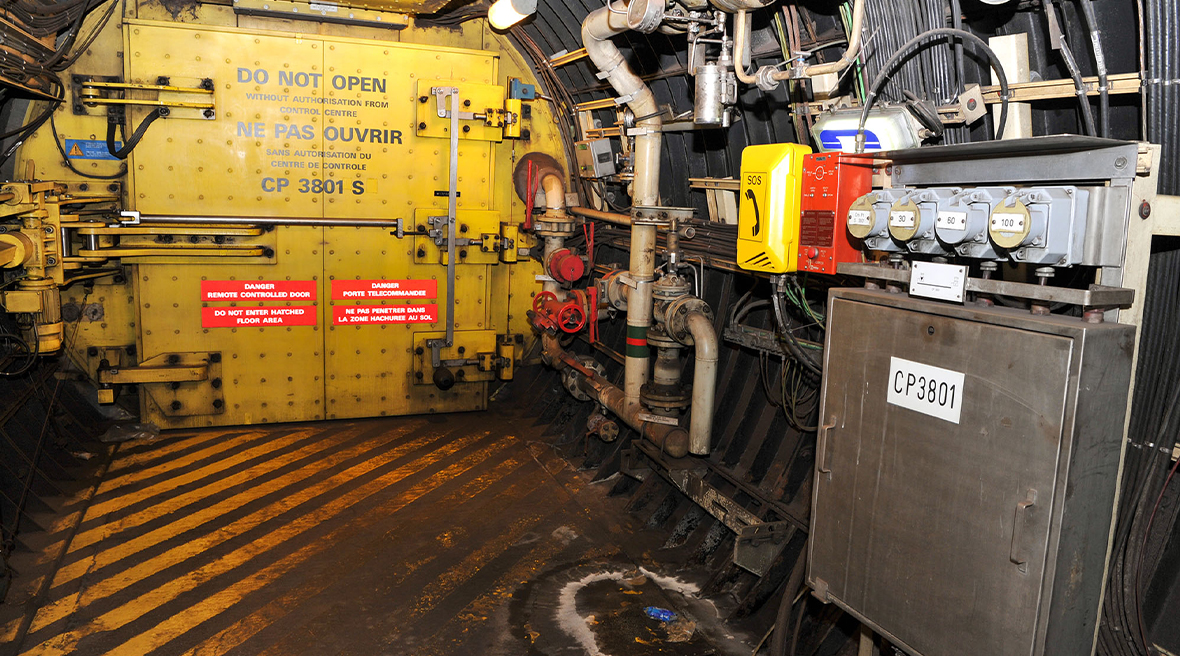
One of the cross-passage doors, which controls access to the rail tunnels from the service tunnel
“This is one of the cross-passage doors, which controls access to the rail tunnels from the service tunnel. There are 270 of them and they are placed every 375 m apart. Their main purpose is to allow access to the 'lifeboat' service tunnel in an emergency. The service tunnel is maintained at a higher air pressure than the rail tunnels, meaning that any smoke in the rail tunnel will be pushed away from the door creating a bubble effect to allow an evacuation. This particular door is near the Midpoint of the tunnel, 28 km from the UK portal and opens onto the south rail tunnel.”
Rolling stock
Rolling stock are the locomotives, carriages, and other vehicles used on a railway line. At LeShuttle, the passenger and truck shuttles are unique in the world and our locomotives are the most powerful in Europe. Dennis can tell us more about the different locomotives LeShuttle operates.
“As a passenger with us, you’ll travel in one of our nine LeShuttle Passenger Shuttles which has a locomotive at each end. One has a single deck for coaches, minibuses, caravans, and vehicles higher than 1.85m. The other transports cars and motorcycles on a double deck. A complete passenger shuttle is made up of 24 carriages and four loading and unloading wagons and can carry 12 coaches and 120 cars.”
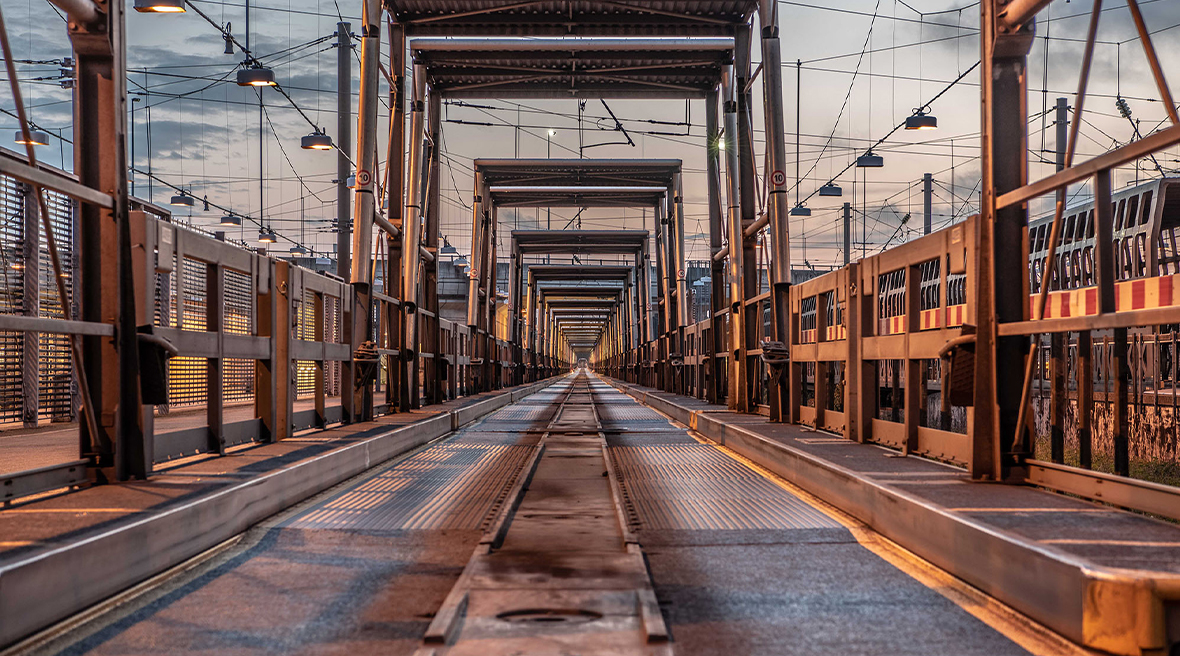
A LeShuttle truck shuttle
“This is one of our truck shuttles, you can just make out the rear loco, half a mile away in the distance. Each shuttle can carry 32 full size articulated lorries.”
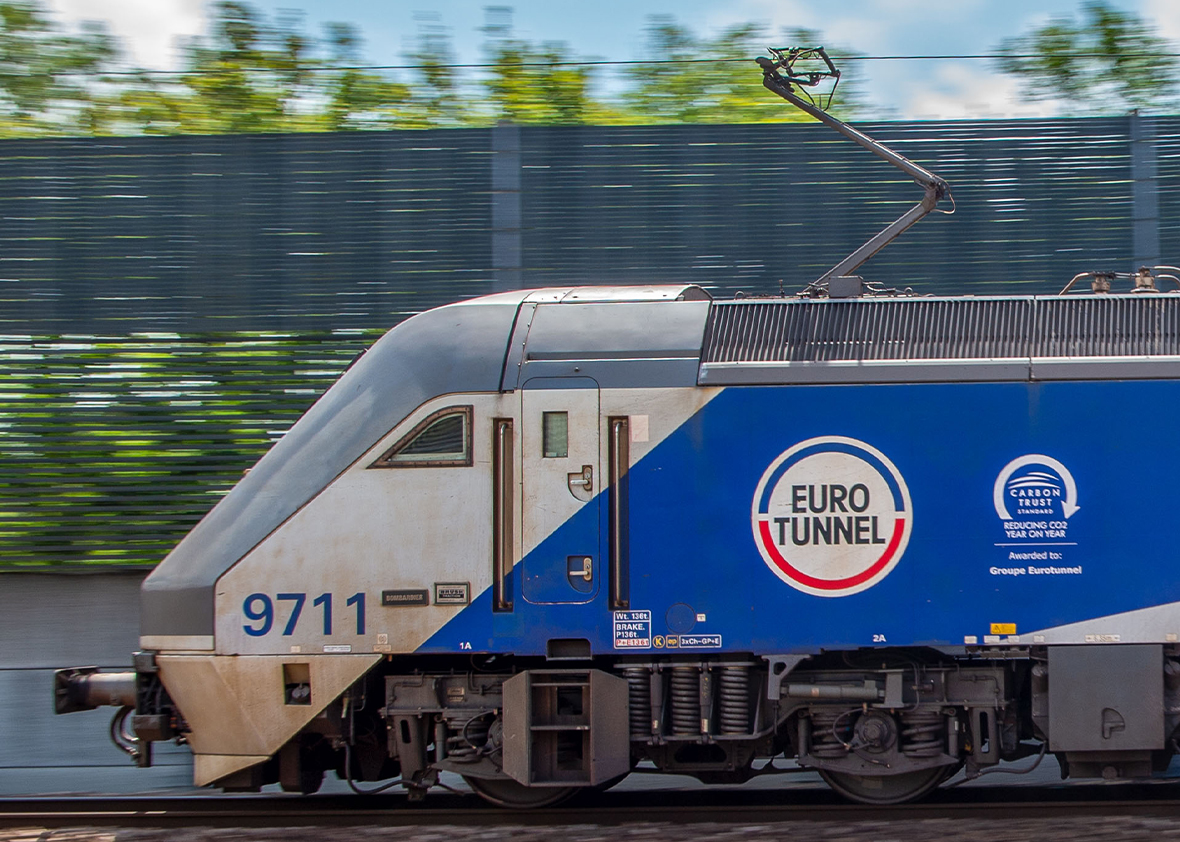
A LeShuttle Class 9000 shuttle loco
“This is a LeShuttle Class 9000 shuttle loco on the UK arrival line. These were assembled by Brush Traction in Loughborough. They're the world's most powerful locomotives of their type. Each shuttle has a pair of locomotives working in tandem, one pushing, one pulling. Should one of them have a problem, the other is capable of hauling the shuttle out of the tunnel.”
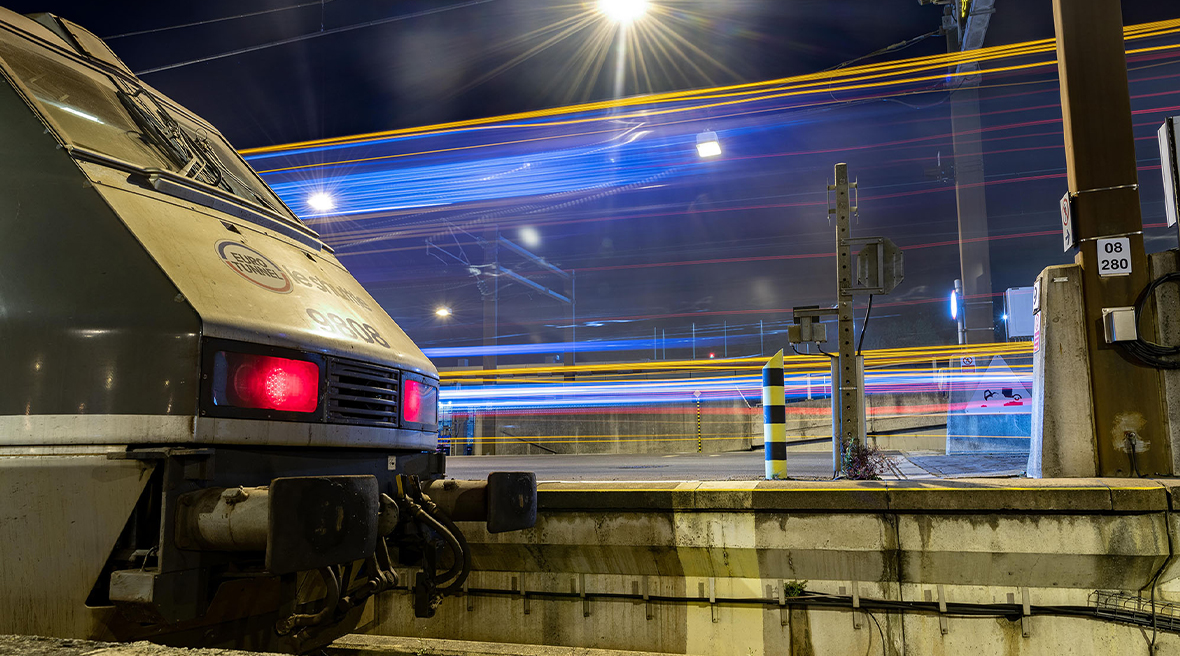
Dennis’ photography skills show off a shuttle under long exposure
I took a 30 second exposure of one of our shuttles unloading. The front has a standard UIC coupling which allows it to haul works trains, freight trains, or even another shuttle if required.”
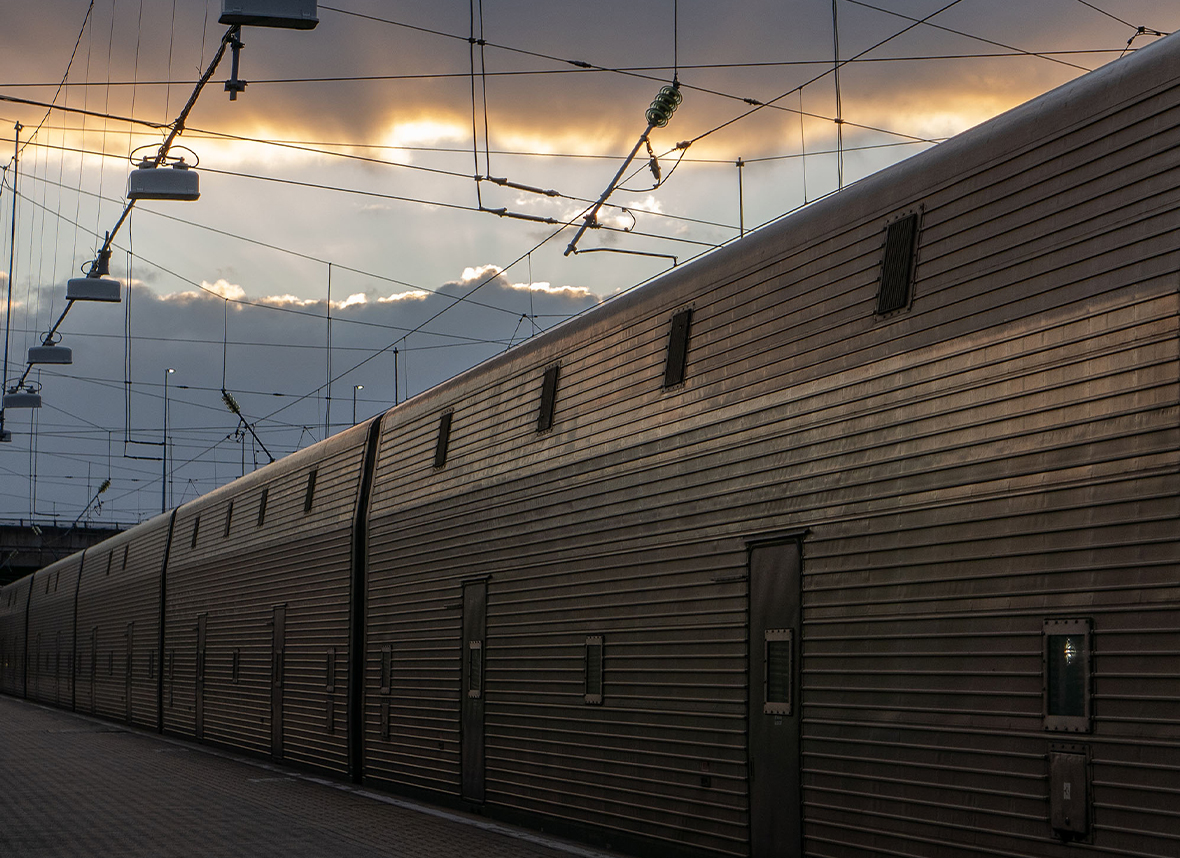
Passenger shuttles are built with a stainless-steel body shell
“Our tourist wagons (passenger shuttles) are built with a stainless-steel body shell. This resists the harsh environment they operate in. We not only have salty air from being so near to the coast but also brake dust from the shuttles themselves. They're the largest trains in Europe, as well as being 800 metres long, they also have a very large cross section to allow them to accept cars and allow people to move around them.”
Inside our shuttles
Dennis has been driving LeShuttle shuttles for nearly a decade, so he can show you a ‘driver’s view’ from inside the cab.
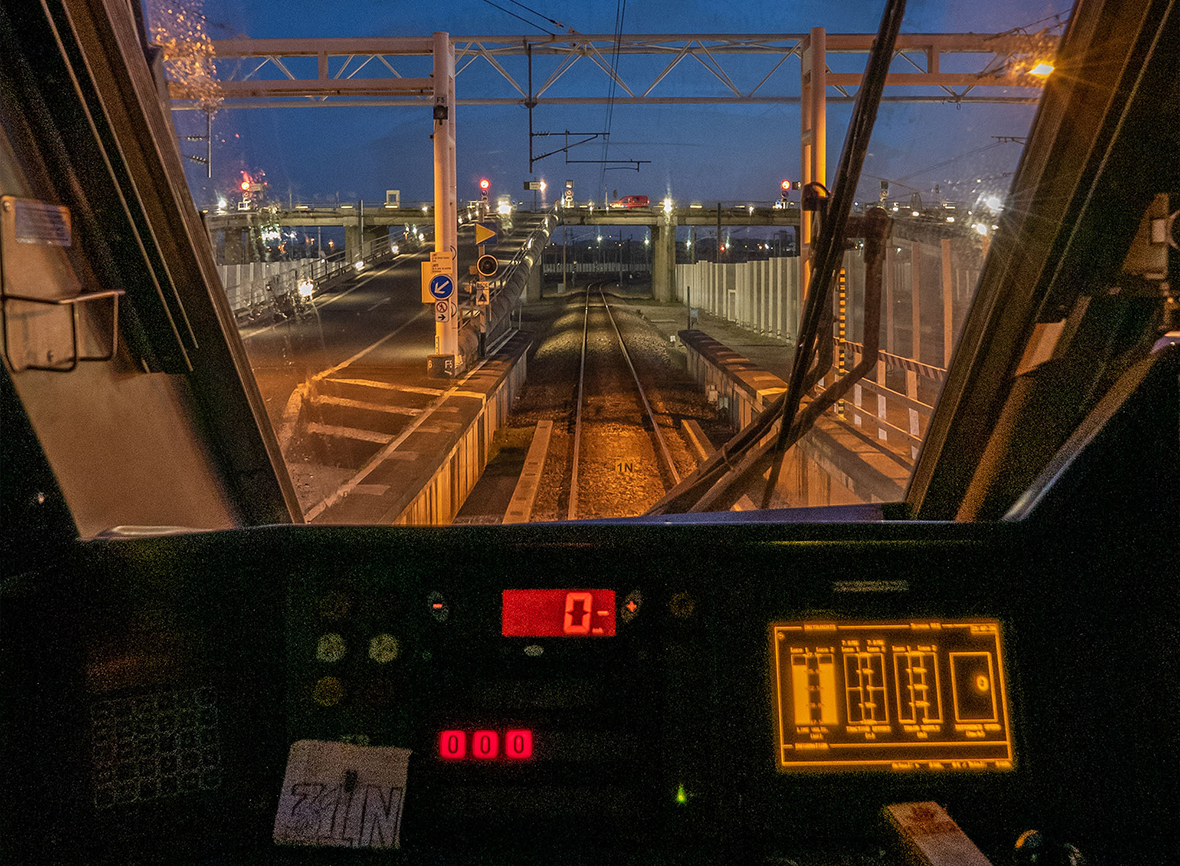
What a LeShuttle driver sees each day from their cab
“This is the view a driver sees when waiting to depart. Our shuttles run 24 hours a day, on each day of the year.”
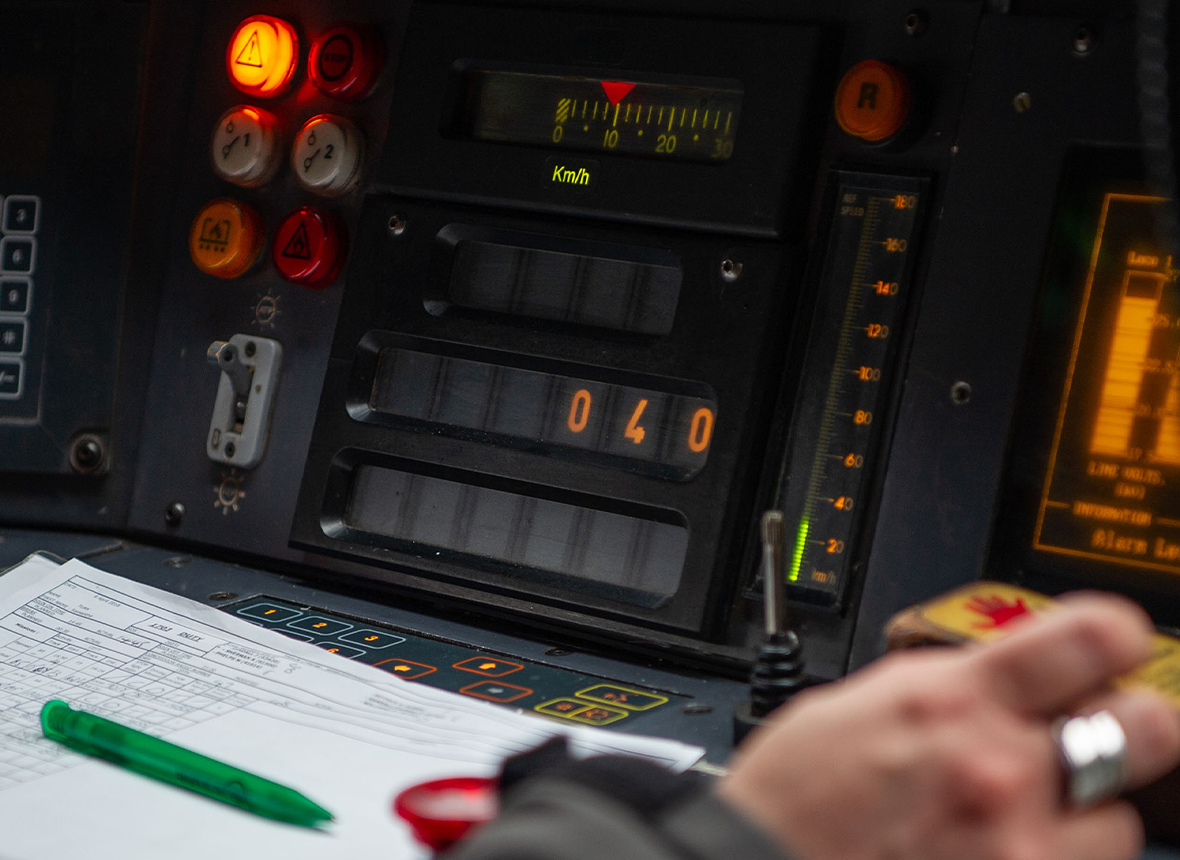
Inside the drivers’ cab
“Our rail network uses a signalling system called TVM430, it's a French in-cab signalling system originally designed for the TGV. It displays the speed limit (in this case 40 km/h) or stopping signals on the locomotive's dashboard rather than the traditional trackside signals. In the tunnel our shuttles run at up to 140 km/h, impressive for something half a mile long that weighs over 3000 tonnes!”
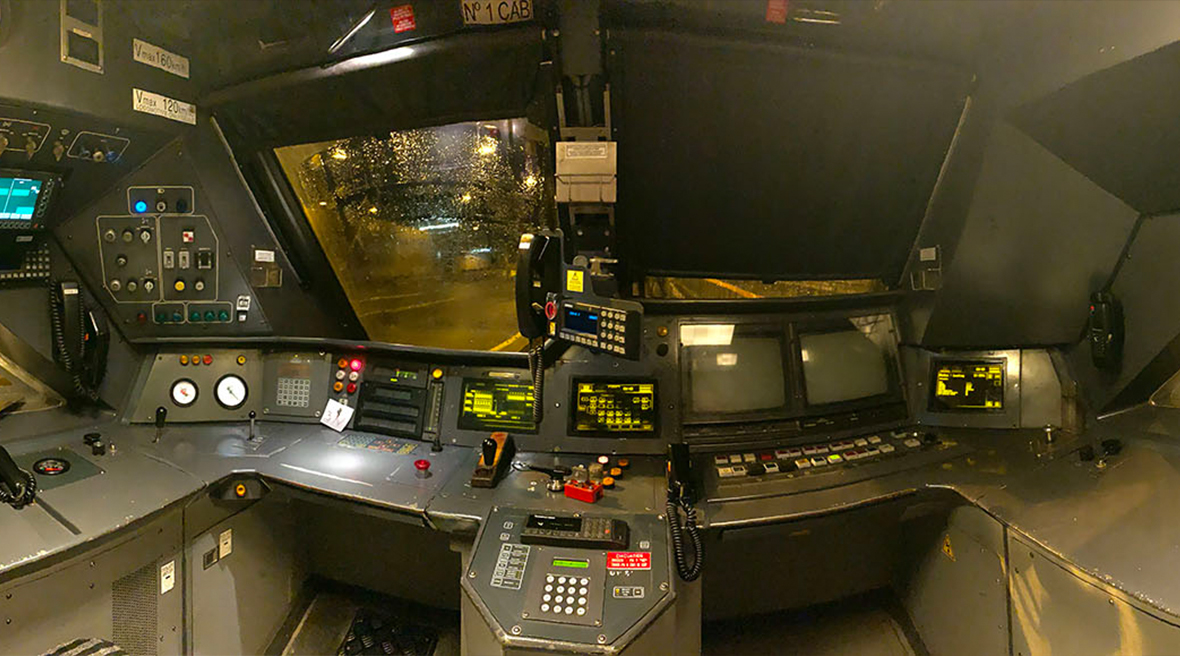
The driver's desk and Chef de Train (Train Captain) position allows them to switch places easily
“In this shuttle cab, the driver's desk is on the left, and the Chef de Train (Train Captain) position is on the right. If we needed to change direction in the tunnel, the driver stops and moves across to the Chef de Train desk. The Chef de Train, at the other end of the shuttle, will move across to the driving desk, which saves time and allows us to get the train out of the tunnel more quickly.”
Loading and unloading
Loading and unloading our shuttles is part of our day-to-day, but if you haven’t travelled with us before it can be a little daunting to imagine driving your car onto a shuttle. Cars are usually loaded onto the double deck portion of the shuttle, so you may drive up a ramp inside the shuttle to access this, or you’ll be directed to the lower deck. Higher vehicles, such as motorhomes and coaches drive straight into the single deck portion of the shuttle.
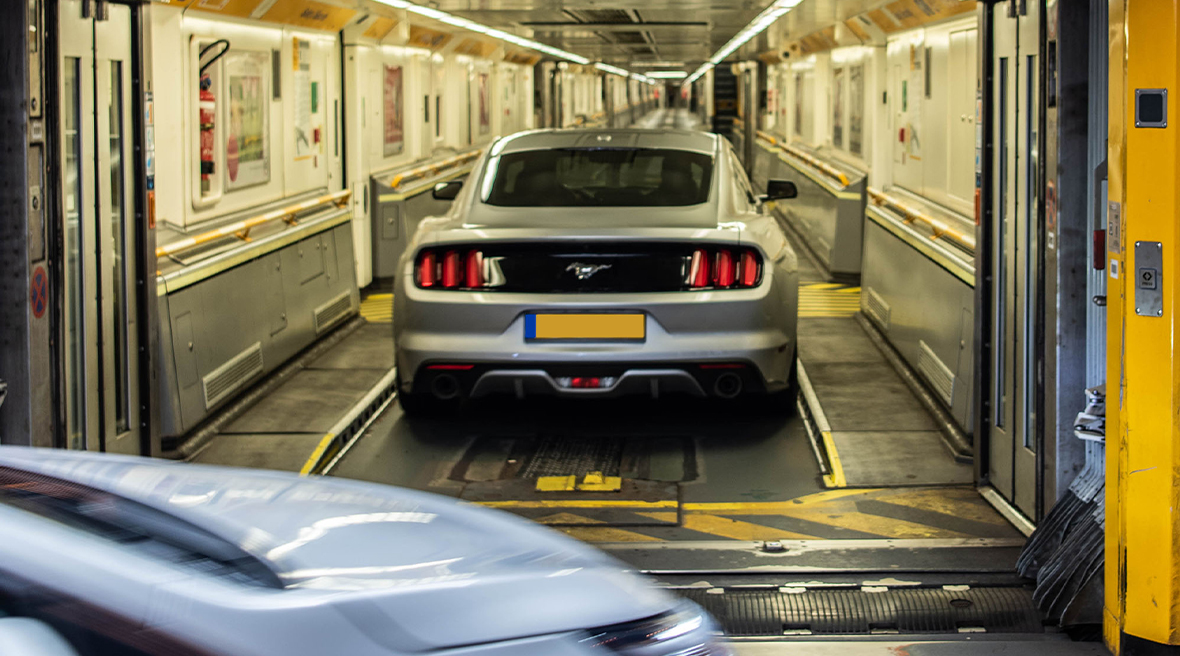
Vehicles driving onto the lower deck of the rear ‘rake’
“Here’s what it looks like when vehicles drive onto the lower deck of the rear ‘rake’. Rake is a railway term used to describe a section of train containing wagons of a similar design and purpose. Each rake is a quarter of a mile long.”
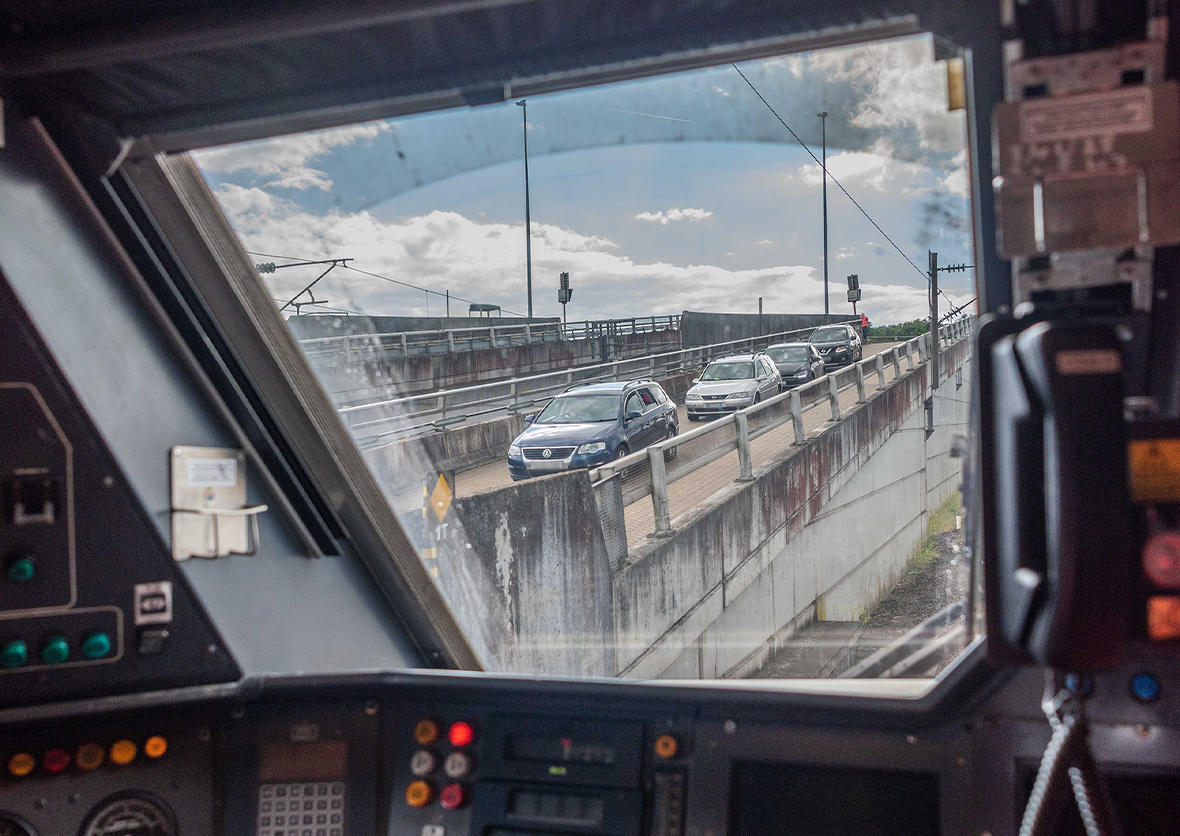
Loading and unloading the shuttles
“If you've travelled with us before you may have seen the rear locomotive as you drive down to the shuttle. This is a view from inside the cab.”
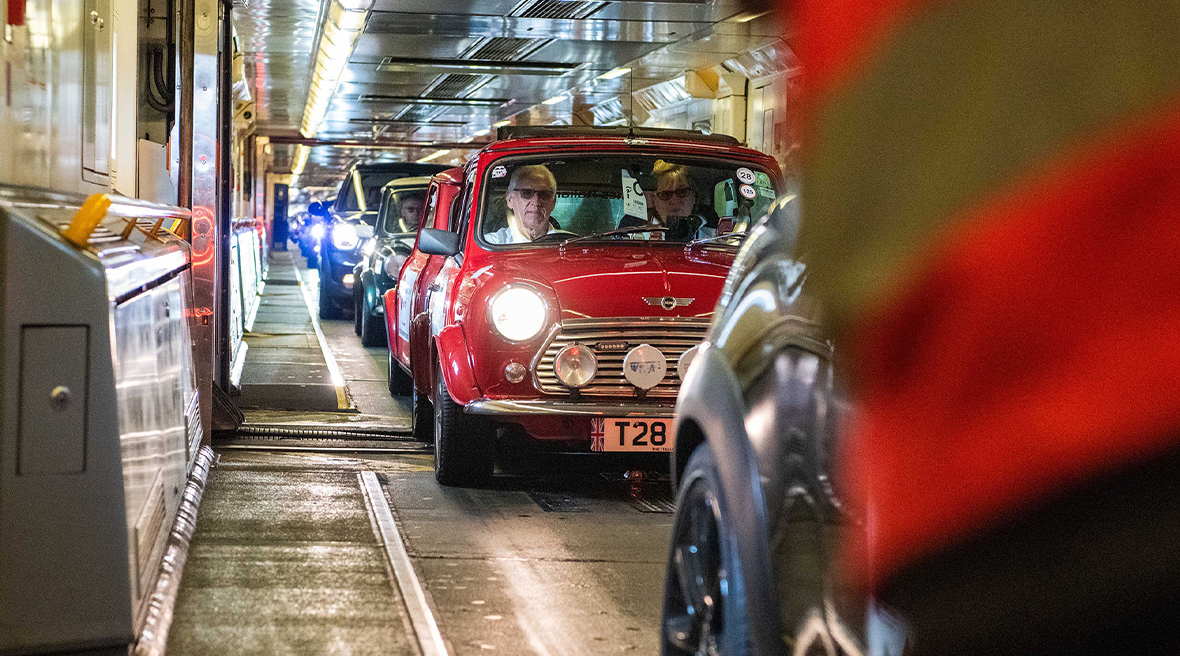
‘The Italian Job’ charity Mini run in 2019
“Back in 2019 we welcomed ‘The Italian Job’ charity Mini run onto our shuttles. We can fit seven classic Minis into a compartment, with most modern cars we can usually only fit four or five.”
The LeShuttle control centre
Because there is a lot going on day-to-day in our terminals and out on the tracks, it makes sense to have a centralised control centre.
The Rail Control Centre (RCC) manages all the trains and shuttles in the tunnels whereas Traffic Control Centre (TCC), controls the traffic onsite (freight/lorry traffic and passenger traffic, staff vehicles, etc) and coordinates the emergency response (ERO’s etc) for all above ground incidents on the terminal.
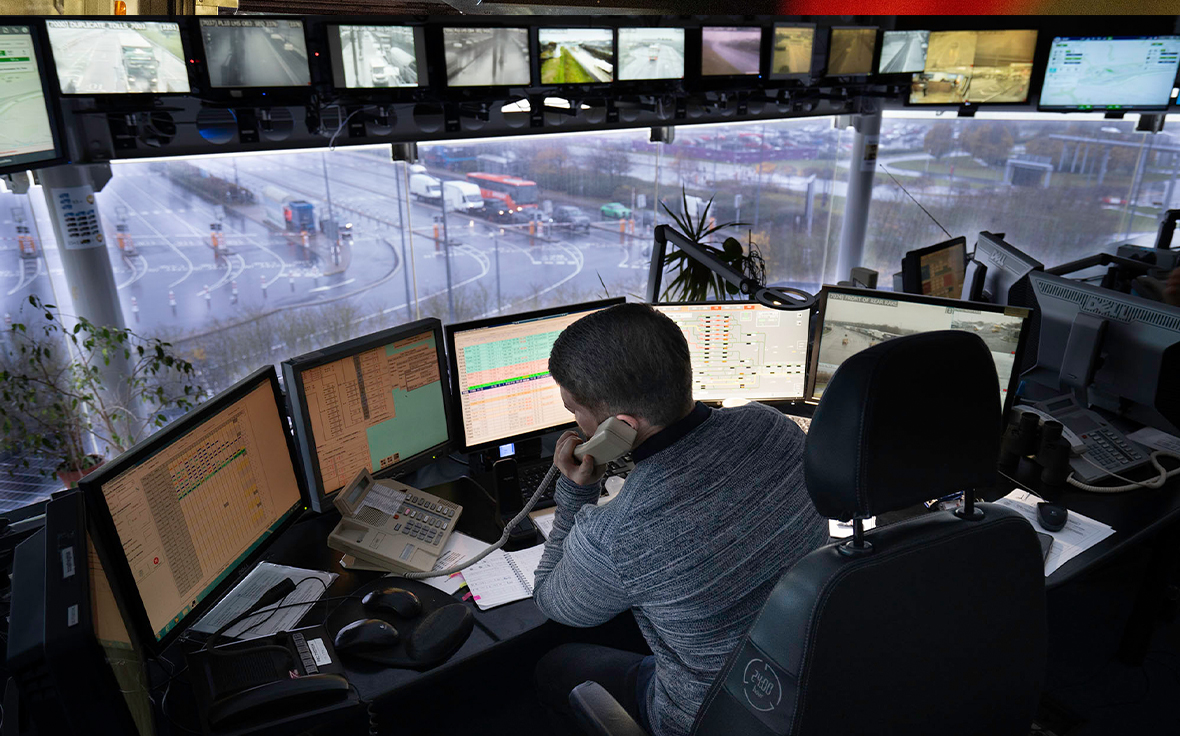
An inside look at LeShuttle’s control centre
LeShuttle staff
The staff are key to the exceptional service we provide. Dennis has captured some great pictures of the people you’ll meet when you travel with us.
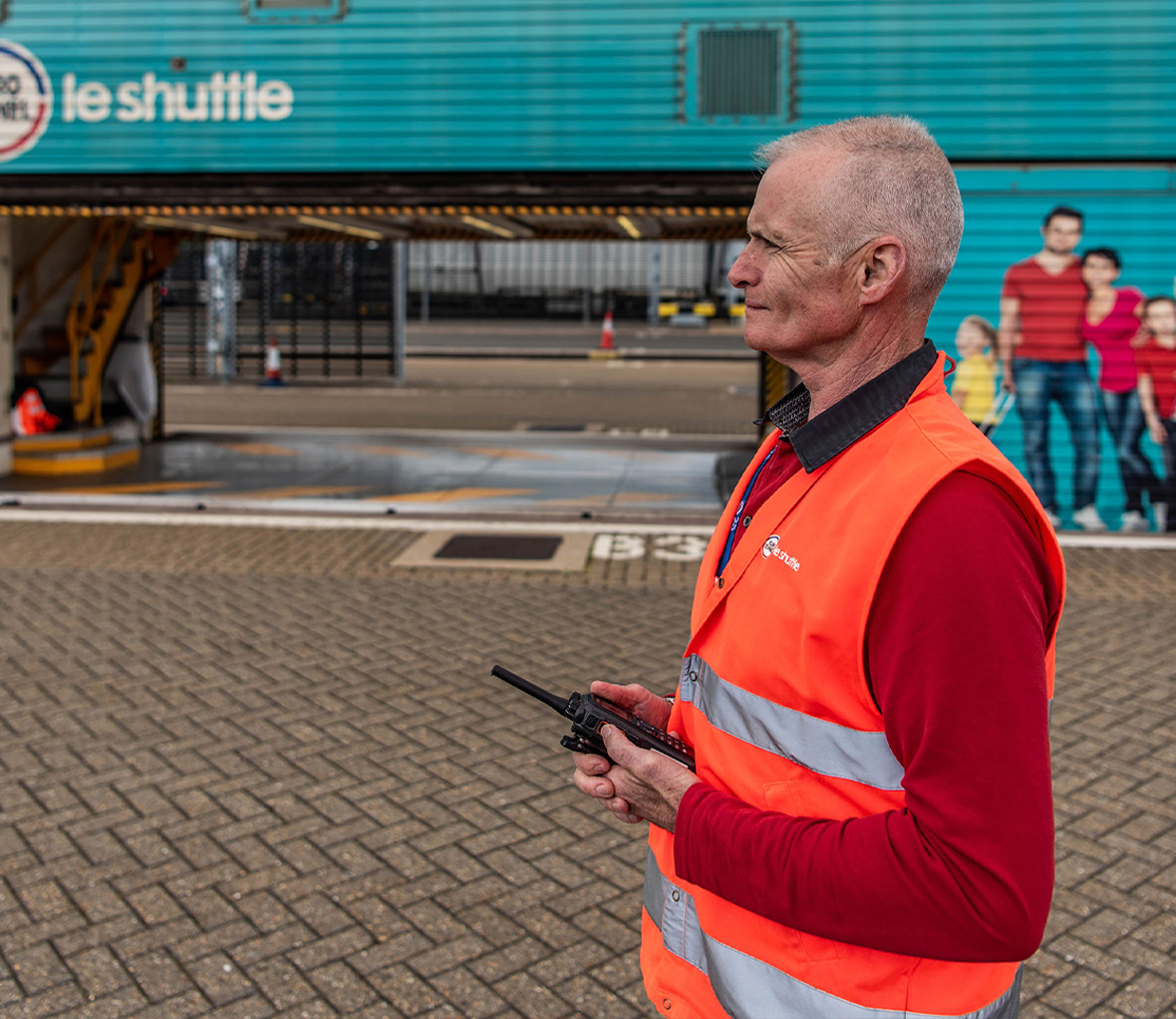 “This is Stuart, one of our UK crew members. He waits for the arrival of our customers to the train. Passenger shuttles will usually have six crew members on board, as well as a Driver and a Chef de Train.”
“This is Stuart, one of our UK crew members. He waits for the arrival of our customers to the train. Passenger shuttles will usually have six crew members on board, as well as a Driver and a Chef de Train.”
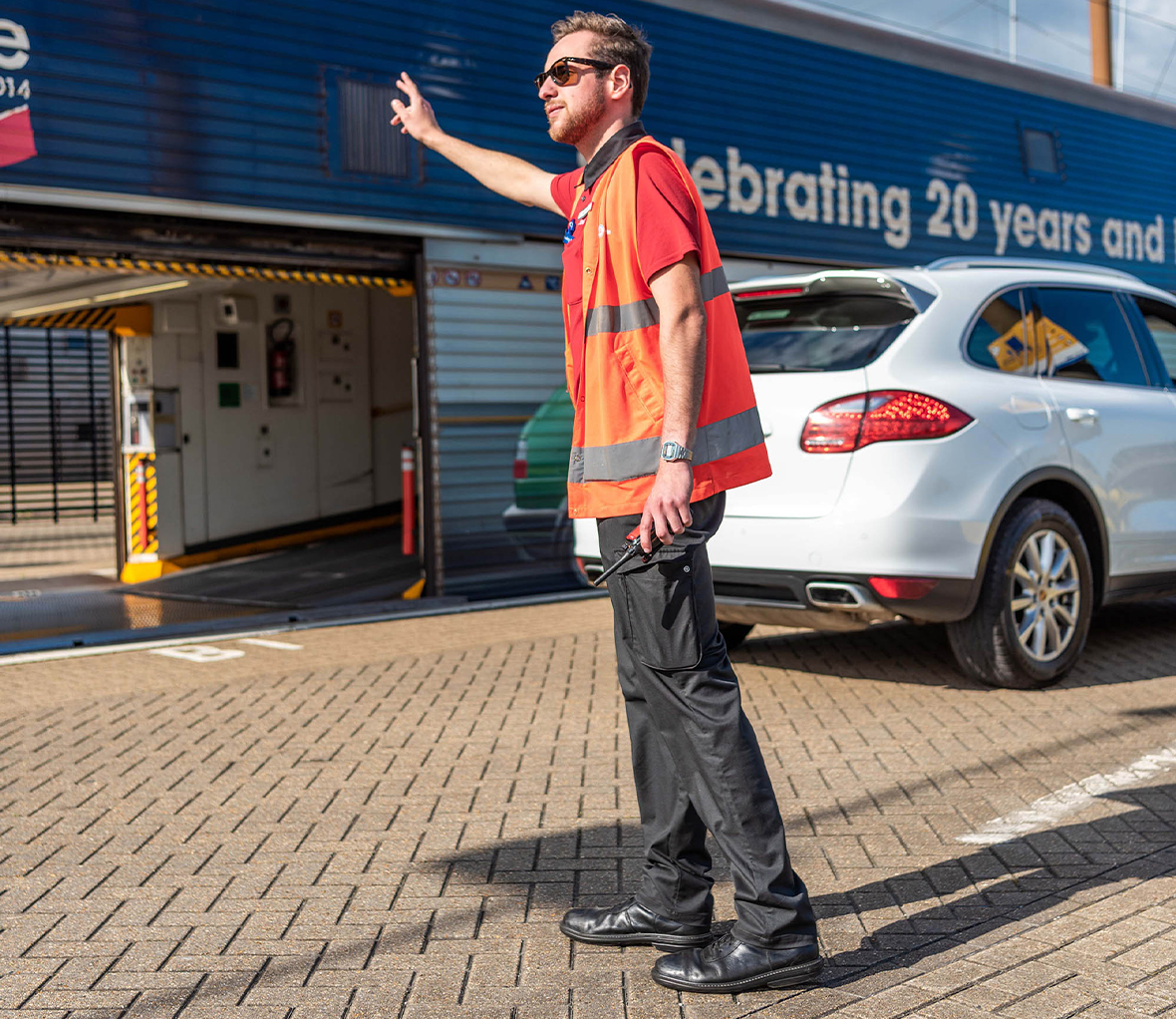 “Anthony is one of our French crew members. Here he is directing customer vehicles onto the upper deck.”
“Anthony is one of our French crew members. Here he is directing customer vehicles onto the upper deck.”
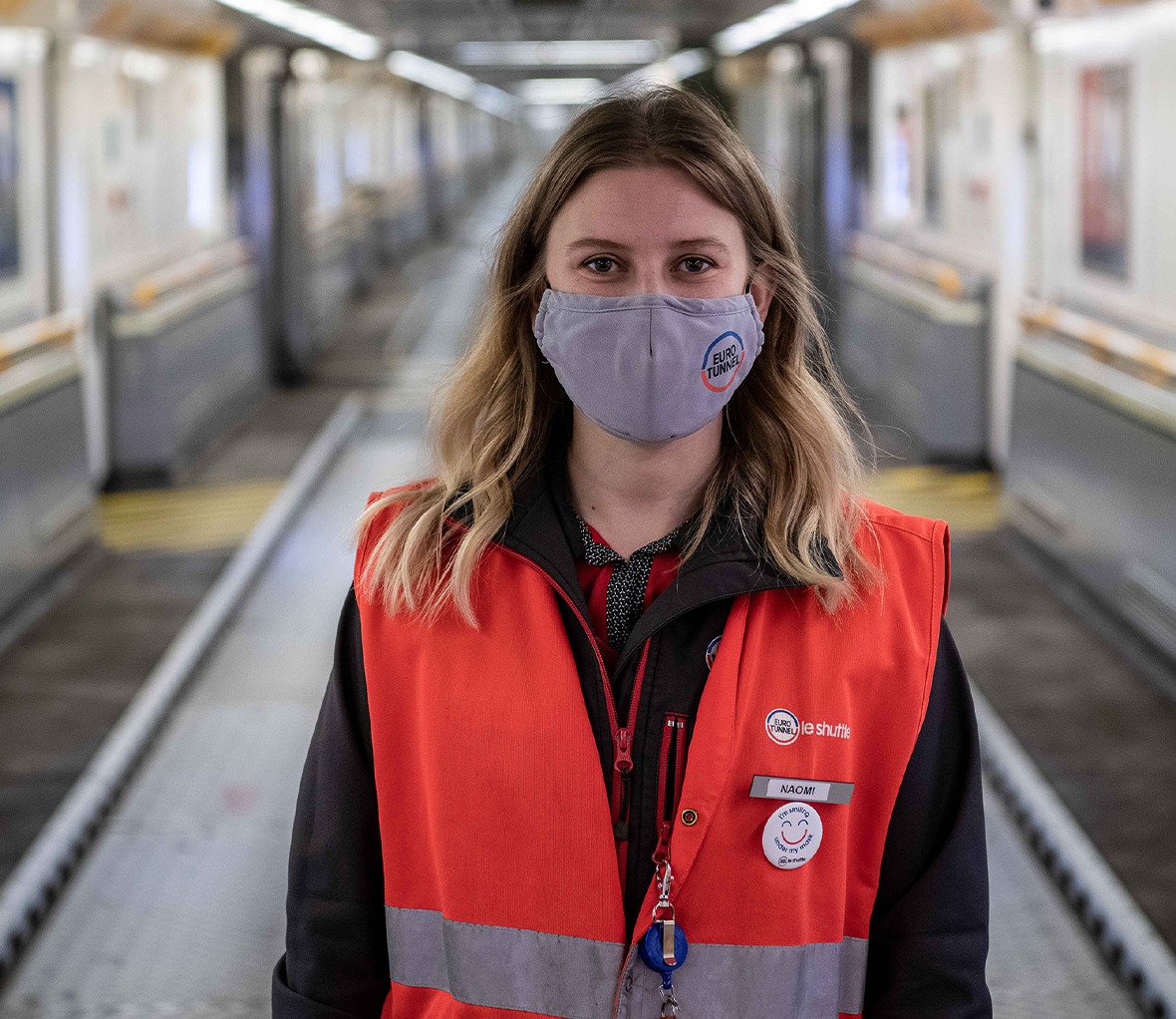 "Here’s Naomi, one of our UK crew members, modelling our COVID masks.”
"Here’s Naomi, one of our UK crew members, modelling our COVID masks.”
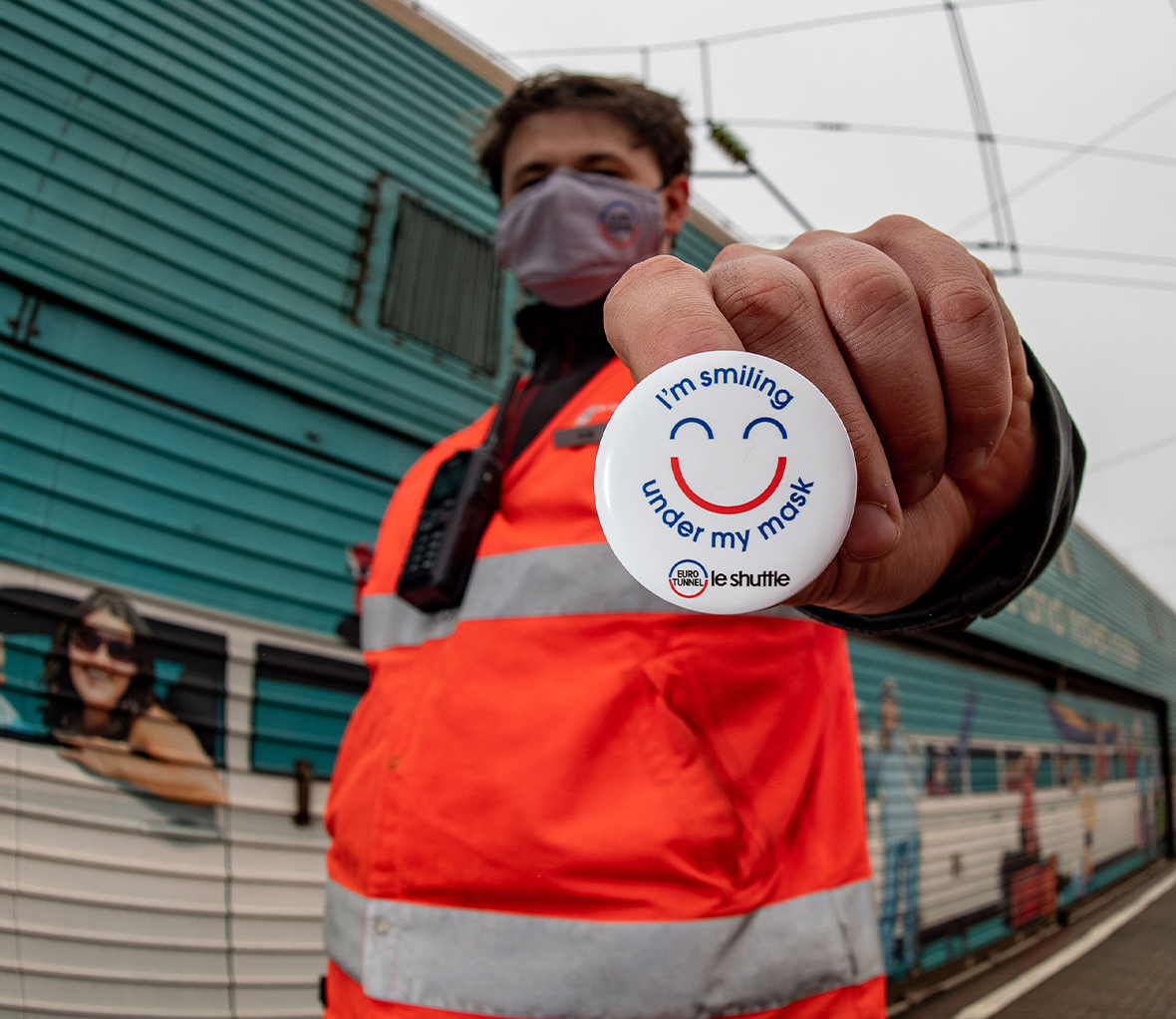 "Tom, one of our UK drivers, shows off our ‘I'm smiling under my mask’ badges.”
"Tom, one of our UK drivers, shows off our ‘I'm smiling under my mask’ badges.”
Start your European adventure with LeShuttle
While we cannot promise that you’ll meet Dennis, we can make sure you get from Folkestone to Calais in just 35 minutes. Travelling with us is safe and secure, allowing you to explore Europe from the comfort of your own car.